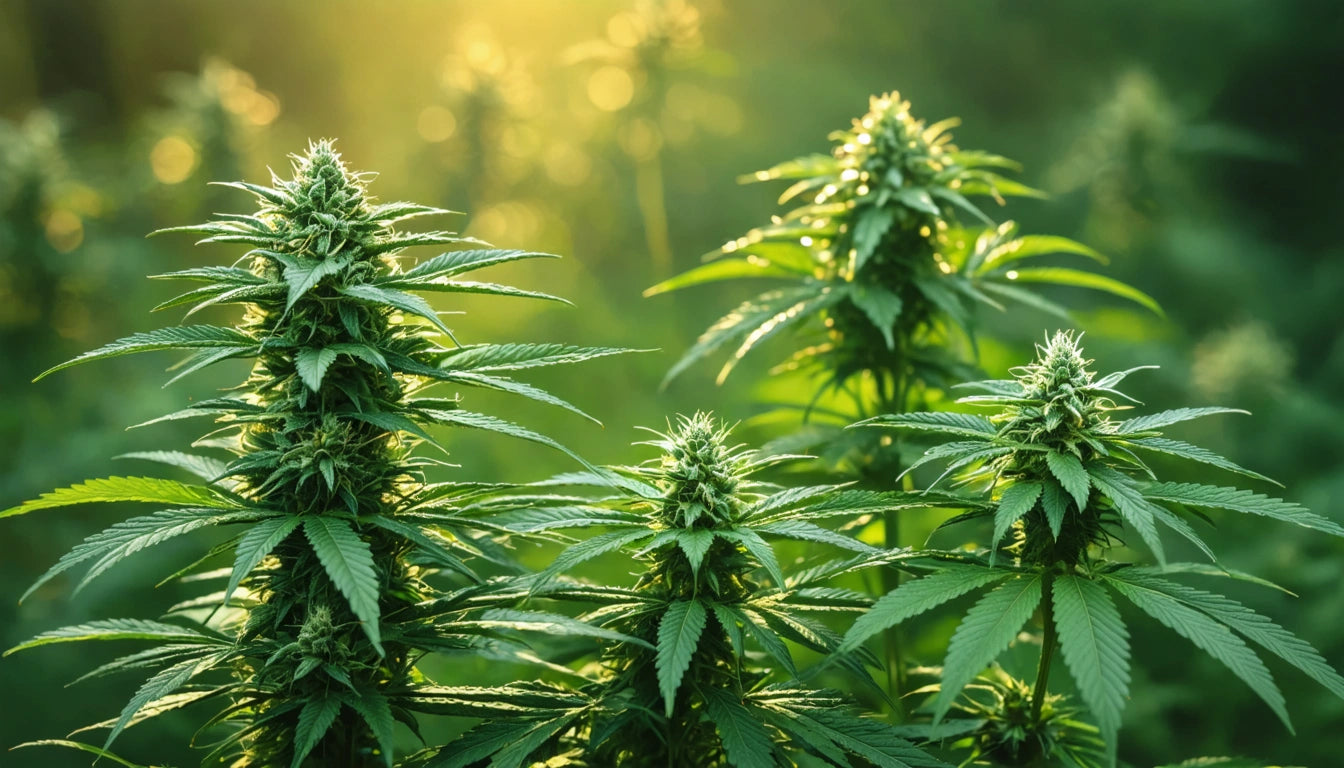Table of Contents
How to Test THC Levels in Cannabis Plants and Products
Accurately measuring THC concentration in cannabis is essential for consumers, cultivators, and manufacturers alike. Whether you're wondering how to test THC percentage in your homegrown plants or need to verify the potency of purchased products, several methods exist with varying degrees of precision and accessibility.
Understanding THC Measurement Fundamentals
Before diving into testing methods, it's important to understand what we're measuring. THC (tetrahydrocannabinol) is the primary psychoactive compound in cannabis. When discussing potency, we typically refer to the percentage of THC by weight in dried flower or the concentration of THC in milligrams for products like edibles and concentrates.
Several factors affect THC levels in plants, including genetics, growing conditions, harvest timing, and curing processes. For manufactured products, extraction methods and formulation techniques significantly impact final potency.
Why Testing Matters
Accurate THC testing serves multiple purposes:
- For consumers: Helps determine appropriate dosing
- For cultivators: Guides breeding programs and harvest decisions
- For manufacturers: Ensures product consistency and regulatory compliance
- For medical patients: Provides predictable therapeutic effects
Home Testing Methods for THC Content
While professional lab testing offers the highest accuracy, several at-home options exist for those wondering how to check THC levels in weed without specialized equipment.
THC Test Kits
Consumer test kits typically use thin-layer chromatography (TLC) or colorimetric reactions to provide a rough estimate of cannabinoid content. These kits generally include:
- Testing plates or strips
- Developing solution
- Reference charts for interpretation
- Sample collection tools
While these kits can distinguish between high and low potency samples, they rarely provide precise percentage measurements and may not differentiate between THC and other cannabinoids effectively.
Smartphone Apps and Devices
Emerging technologies connect to smartphones to provide more detailed analysis. These typically use spectroscopy or image analysis to estimate cannabinoid profiles. Though improving rapidly, these consumer-grade devices still lag behind laboratory equipment in accuracy.
For those looking to store and test samples properly, quality storage containers with secure lids help maintain sample integrity by preventing degradation from light, air, and moisture during the testing process.
Highlight: No home testing method matches the precision of professional laboratory analysis, but consumer options can provide useful estimates for personal assessment.
Professional Laboratory Testing Procedures
For definitive results on how to test THC potency, professional laboratories employ sophisticated analytical techniques.
High-Performance Liquid Chromatography (HPLC)
HPLC is the gold standard for cannabinoid testing. This method:
- Separates cannabinoids based on their chemical properties
- Provides precise measurements of THC, CBD, and other compounds
- Distinguishes between acidic forms (THCA) and activated THC
- Offers accuracy to within 1% or better
Gas Chromatography (GC)
GC testing heats samples during analysis, which converts THCA to THC. This makes it excellent for determining total potential THC but less ideal for distinguishing between acidic and activated forms naturally present in the sample.
Mass Spectrometry
Often paired with HPLC or GC, mass spectrometry provides detailed molecular identification, allowing labs to detect and quantify specific cannabinoids with extraordinary precision.
For those concerned about how to test negative for THC in drug screenings, understanding these professional testing methods is important. Workplace and legal tests typically use different technologies optimized for detecting THC metabolites in biological samples rather than in plant material, as explained in this comprehensive guide on THC and drug testing.
Interpreting THC Test Results
Understanding test results requires familiarity with several key measurements:
THCA vs. Delta-9 THC
Raw cannabis contains mostly THCA (tetrahydrocannabinolic acid), which converts to psychoactive Delta-9 THC when heated. Lab reports typically show:
- THCA percentage
- Delta-9 THC percentage
- Total potential THC (calculated as: THC + (THCA × 0.877))
The conversion factor (0.877) accounts for the molecular weight difference between THCA and THC.
Interpreting Certificates of Analysis
Professional test results come as Certificates of Analysis (COAs) that include:
- Sample identification information
- Testing methodology
- Cannabinoid profile with percentages
- Terpene content (if requested)
- Contaminant screening results (if requested)
When examining a COA to understand how to test THC levels in cannabis, pay attention to both the THC percentage and the testing date, as potency can decrease over time due to degradation.
Common Challenges in THC Testing
Several factors can complicate accurate THC measurement:
Sample Variability
THC concentration varies significantly within a single plant. Upper buds typically contain higher concentrations than lower buds, and even different sections of the same bud may vary in potency.
Testing Standardization
Different laboratories may employ varying methodologies, equipment calibration procedures, and reporting standards. This can lead to inconsistent results when testing identical samples across multiple facilities.
For those wondering how to test THC content consistently, proper sample preparation is crucial. This includes:
- Collecting representative samples from multiple areas
- Proper drying and grinding for homogeneity
- Using appropriate extraction solvents
- Following standardized testing protocols
These challenges highlight why professional testing facilities follow strict protocols for sample collection, preparation, and analysis to ensure reliable, reproducible results.
Future Innovations in Cannabis Potency Testing
The cannabis testing landscape continues to evolve rapidly with several promising developments:
- Portable spectrometers with near-laboratory accuracy
- Blockchain-verified testing records for supply chain transparency
- Artificial intelligence for predicting cannabinoid profiles from plant images
- Rapid on-site testing solutions for cultivators and processors
These innovations aim to make accurate THC testing more accessible, affordable, and convenient while maintaining scientific rigor. For those interested in staying compliant with testing regulations, resources like this guide on THC and Carboxy-THC provide valuable insights into the evolving testing landscape.
Whether you're a cultivator seeking to optimize harvest timing, a manufacturer ensuring product consistency, or a consumer wanting to verify product claims, understanding how to test THC levels empowers informed decision-making in an increasingly complex cannabis marketplace.











Leave a comment
All comments are moderated before being published.
This site is protected by hCaptcha and the hCaptcha Privacy Policy and Terms of Service apply.